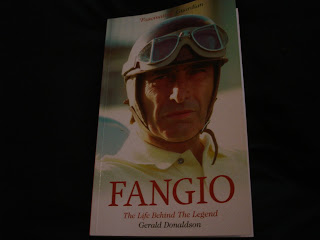A film which I had intended to see upon its release, but which somehow slipped away from my attention, was 'Eddie The Eagle', a biopic which tells the story of the British ski-jumper Eddie 'The Eagle' Edwards.
To summarize, Edwards achieved international prominence and attention in 1988 through his appearance at the 1988 Winter Olympics in Calgary. His struggle to achieve his dream, and his determination to compete captured the public imagination for a short while.
I remember the 'Eddie The Eagle' phenomenon very well, as I was a very avid follower of all sports at the time, that is 1988. I'm not sure whether this was a particularly instructive example of the amateur ideal, because even in the 1980s there were 'elite', successful athletes in the Olympics who were still, to a lesser or greater degree, 'amateur'. No, I think that the draw of the 'Eddie the Eagle' story was that he was an 'everyman' figure, someone who the blue-collar audience could relate to and identify with, having his moment of fame, and making the most of it, not always acting in the way which was expected.
Anyway, I recently got around to watching the 'Eddie The Eagle' movie at last. One of the first things which was noticeable to me was that the production values were of a quite high order. Visually it is a pleasing work, and the CGI and other effects tend to complement the story rather than acting as a distraction.
Importantly, the makers did not try too hard to make everything look 'very' 1970s or 1980s, and so evaded a failing which weighs down quite a few biopics of this type. The scene is set, and some context introduced, early on with some 'flashback' sequences illustrating the younger Eddie's Olympic aspirations and his efforts to overcome adversity.
Taron Egerton gives an endearing and plausible performance as Eddie, capturing some of the loveable naivete and the persistence of the character, as well as instilling some nice comedic touches throughout. The scenes set in the Edwards family home familiarize us with idea that they are honest, down-to-earth people, without romanticizing this unnecessarily.
One of the keys to the narrative for me was that Eddie was resolutely serious about his ski-jumping endeavours, whilst all around him people were laughing and expressing disdain. By the standards of many biopics the script was crisp, and even if the dialogue was (very) occasionally corny, some of it was sharp and impactful.
There is the obligatory 'training montage', although this one is quite amusing, and in another parallel with the 'Rocky' films, a central mentor-pupil theme. In this case the mentor/coach is played by Hugh Jackman. The Bronson Peary character is fictional, incidentally, but hey this is a frequent occurrence in biopics....
One false note for me was struck by the characterisations of the British Olympic officials and some of the British competitors at the '88 Winter games. For me this was a slightly clumsy attempt to present the story as one of Eddie against The World, or at least Eddie versus The Establishment. An over-simplification, in all probability, but such over-simplifications are often deemed necessary by film-makers or their overlords in order to create 'tension' and 'conflict'.
Of the supporting cast, I thought that Keith Allen was very likeable as Eddie's father, expressing concern that the young man is neglecting his "normal" career, but ultimately being proud of Eddie's achievements. Jim Broadbent pops up as a TV commentator.
The heart of the film for me was the period which Eddie spent training and learning his craft in Germany. Here we see how Eddie's unaffectedness and uncomplicated tenacity endear him to some people, but also how he is ridiculed and patronised by some of the top-drawer competitors in his chosen sport. The Petra character quickly takes up Eddie's cause, although his 'coach' Peary takes some work before fully becoming a convert. Petra and Bronson are, you might say, stock characters, but they are vital in facilitating the forward propulsion and development of the story.
I would say that the decision to base so much of the screen time at the German location was an astute one, as it lent some continuity and stability to the narrative, and there is the bonus of some very pleasant scenery.
The scenes set at the Winter Olympics at Calgary are a touch flimsy, but this is common with movies falling under this category. There is some cursory exploration of the notion that other athletes thought that Eddie was receiving too much adulation and attention, but very little about the fears that he was falling prey to people interested in 'using' him for commercial purposes; I distinctly remember the latter being a centrepiece of the media coverage about Eddie in 1988.
I think that the film, intentionally or otherwise, evoked the slightly surreal nature of the Eddie Edwards episode which I recollect from 1988, a story which arguably cannot be repeated today.
Overall, I enjoyed it, and it had more substance and heart-warming appeal than I had expected. It got across the idea that 'ordinary' people might not be able to achieve success measured in terms of gold medals or their equivalent but simply striving to be involved and included can invigorate and ennoble them, and act as an example to others, but the idea was communicated here without being preachy or heavy-handed.




















